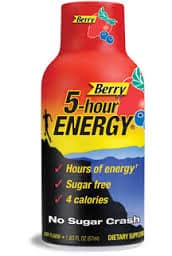Last year, more than one billion “energy shots” were sold in the US—al
In many ways, 5-hour Energy has no business being so successful. The packaging is gaudy, it claims no celebrity endorsements, and it tastes like the cough syrup I took as a kid. It clearly was not developed through needs analysis or other traditional market techniques.
The genius of 5-hour Energy is that it captured a “job to be done.” According to “jobs” theory, people do not buy products or services—they hire them to do a job. The classic example is that no one ever really set out to get a quarter-inch drill, they set out to get a quarter-inch hole.
At a deeper level, what this means for innovators and marketers is that they must replace a customer-need and product-benefit mindset with a “circumstance of struggle” mindset. What do I mean by the circumstance of struggle? I’ve hit the early afternoon slump, but I’ve still got lots of work to do. And when I get home I need to get dinner ready for the kids or go to the gym or whatever. For years, there were a number of things I and others used to resolve this struggle: willpower, coffee, a candy bar, a nap, etc.
But then in 2004, many of us saw a low-budget commercial that promised, “If you want to get out of that afternoon slump and not crash later, try 5-hour Energy.” The product was placed where we experienced the struggle—like at a convenience store, where we often bought some of the other, sub-optimal solutions to the “job” of the afternoon slump—and we tried it. Though actual sales figures are not publicly available, plant utilization and staffing models indicate that in that first year many millions of us tried 5-hour Energy and that demand was growing steadily.
Of course, customer needs and product features factor into the success of 5-hour Energy. However, those needs and features are clearer and easier to specify when framed from a jobs-first perspective. In an interview with Forbes, Manoj Bhargava, the founder of 5-hour Energy, remarked that as he sought to resolve his problem of the afternoon slump he asked himself, “If I am tired, am I also thirsty?” It turns out that by framing the problem from the circumstance of struggle, he realized that his product should only be a couple of ounces. Although Bhargava wasn’t explicitly using jobs theory, he created his product based on an understanding of a circumstance of struggle in all of its specificity. His intuitive use of a jobs framework made product-feature and customer-need issues much clearer and simple to resolve.
While remarkable, the success of the 5-hour Energy line is not a surprise—it is exactly what jobs theory would predict. Creating a product around a job and keeping it there is advantageous for product development and establishes durable differentiation from the competition. Consequently, although well-funded competition has arisen over the last decade, this gaudily-packaged cough-syrupy stuff continues to dominate a multibillion dollar market.

